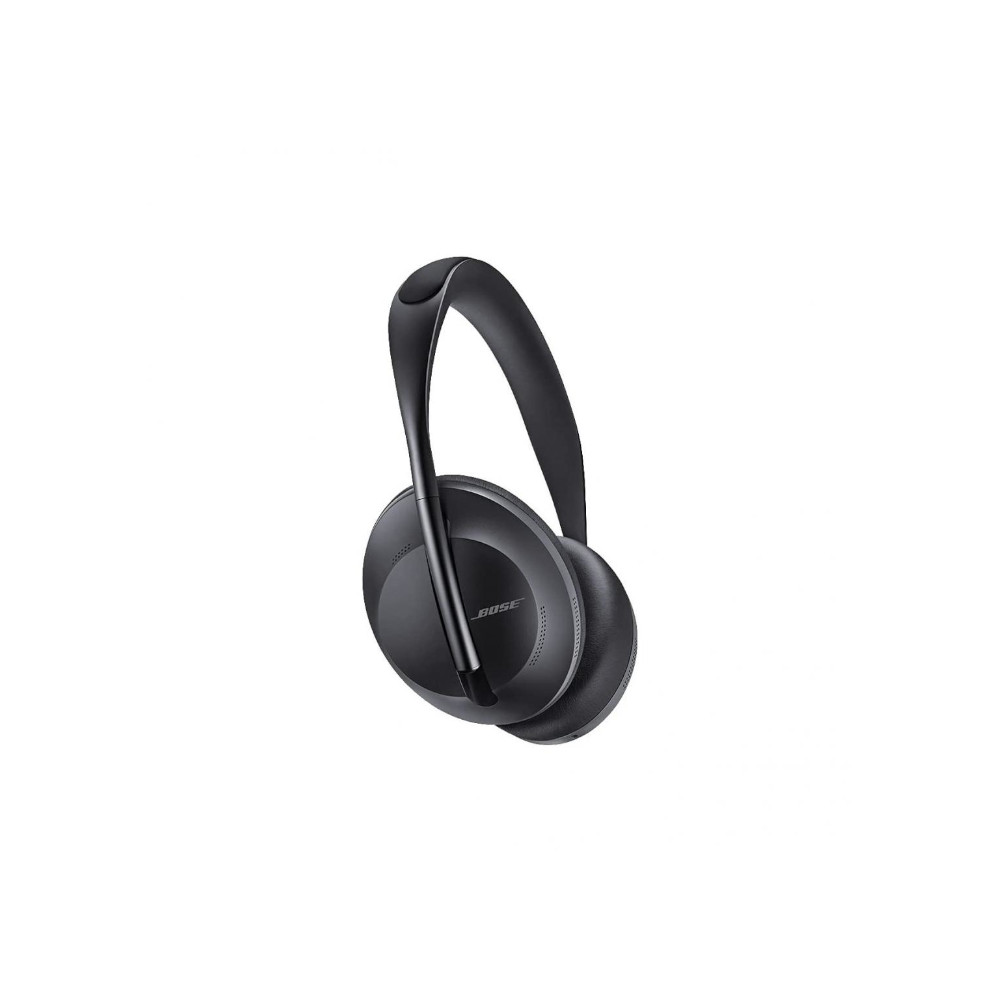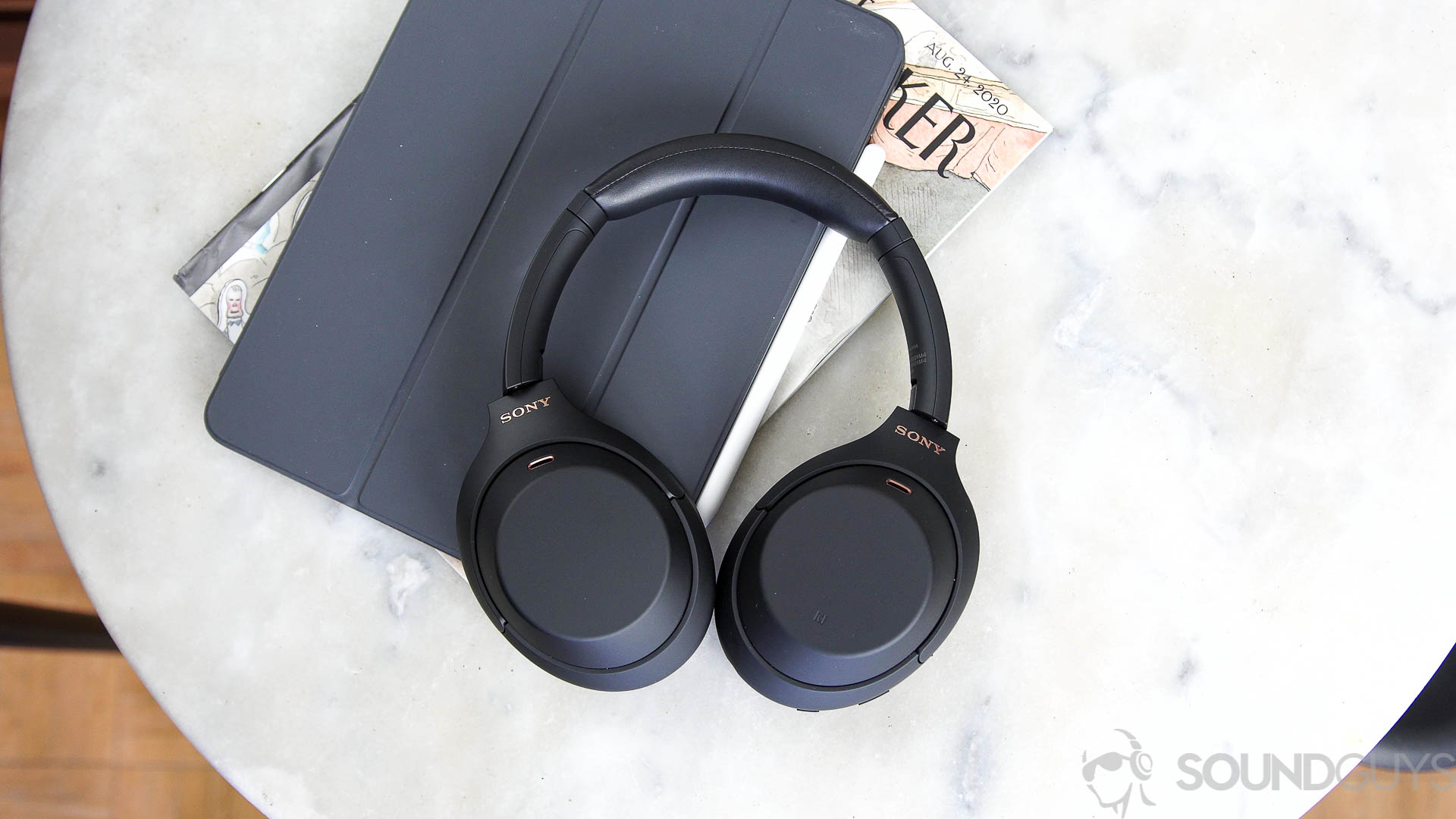All products featured are independently chosen by us. However, SoundGuys may receive a commission on orders placed through its retail links. See our ethics statement.
Bose Noise Cancelling Headphones 700 vs Sony WH-1000XM4
July 10, 2024




Bose and Sony are the industry leaders when it comes to manufacturing active noise canceling (ANC) headphones. Their flagship headphones from the last generation were the Bose Noise Cancelling Headphones 700 and the Sony WH-1000XM4, which fought for the title of best ANC headphones, as they do every iteration. While both products have a successor, they both still hold up today and can be found for less. We’re pitting the Bose Noise Cancelling Headphones 700 vs Sony WH-1000XM4 in this head-to-head to see which headphones are worth your money.
What's new?
- This post was updated on July 10, 2024, to ensure the timeliness of the information within.
- The Bose Noise Candeling 700 Headphones and the Sony WH-1000XM4 have since been succeeded by the current flagship Bose QuietComfort Ultra Headphones and the Sony WH-1000XM5. See how they compare here.
Bose Noise Cancelling Headphones 700 vs Sony WH-1000XM4: Which headphones are designed better?
Both headphones are well-designed pieces of hardware, though they each have their own caveats to consider.

The Bose Noise Cancelling Headphones 700 feature a clean design with matte-finished ear cups and an adjustable steel headband. The thick ear cups on these headphones feel snug, resulting in good isolation that blocks out a significant amount of ambient noise. Unfortunately, the ear cups don’t fold up toward the headband for a compact form factor, which makes them bulkier than Sony’s headphones.
Also, the thick padding — coupled with the soft, rubberized headband — may put more pressure on your head than with the Bose QuietComfort 35 II or Bose QuietComfort 45. While the added pressure isn’t extreme, some may find it uncomfortable to wear during very long listening sessions.

The Sony WH-1000XM4 sports the same design as the WH-1000XM3 and features the same folding hinge for easy storage and transport. Unlike its predecessor, the ear cups on the WH-1000XM4 are thicker for improved isolation.
When designing the WH-1000XM4, Sony reduced the amount of padding on the headband, leading to increased pressure on your head, which can feel uncomfortable during long periods. However, similar to the Bose Noise Cancelling Headphones 700, this isn’t a big deal as the added pressure is barely noticeable. Additionally, both sets of headphones weigh almost exactly the same: 254g.
How do you control the Bose Noise Cancelling Headphones 700 and the Sony WH-1000XM4?

The Sony WH-1000XM4 forgo tactile buttons in favor of touch sensors. The right ear cup allows for playback and volume control, while the left ear cup lets you access ambient sound controls or your voice assistant; this may be toggled in the Sony Headphones Connect app. During our Sony WH-1000XM4 review, the touch controls failed to register certain taps, especially when Adam double-tapped the headset to pause playback.
| Control | Music | Calls |
|---|---|---|
| Control Swipe up | Music Volume up | Calls Volume up |
| Control Swipe down | Music Volume down | Calls Volume down |
| Control Swipe forward | Music Skip song | Calls |
| Control Swipe back | Music Skip back | Calls |
| Control Double tap | Music Play/pause | Calls Answer call/hang up |
| Control Palm over touch panel | Music Ambient sound passthrough | Calls |
| Control Multi-function button | Music Toggle ANC/Transparency/ Regular audio or activate virtual assistant | Calls |
The Bose Noise Cancelling Headphones 700 feature a mix of control methods. There are buttons for pairing, active noise canceling control, and voice assistant access, while volume and playback are controlled through a touch-capacitive panel on the right ear cup. From our tests, we found that the Bose Noise Cancelling Headphones 700 did a better job registering swipes and taps than the Sony WH-1000XM4.
| Action | Right headphone |
|---|---|
Two taps | Play/pause. Answer/end call. |
Hold | Decline incoming call |
Swipe forward/backward | Skip/previous track |
Swipe up/down | Increase/decrease volume |
Buttons | Power, voice assistant, noise control |
Customizable controls? | Yes, Bose Music app |
Do the Bose Noise Cancelling Headphones 700 or Sony WH-1000XM4 support better Bluetooth codecs?

Both headphones offer comparable audio connections and codec support, each headset with its own set of pros and cons. The Bose Noise Cancelling Headphones 700 feature a 2.5mm headphone jack and support just one high-quality Bluetooth codec: AAC, which affords reliable high-quality audio to iPhone users. Unfortunately, the same can’t be said for Android users because the Android operating system fails to consistently encode and decode the AAC Bluetooth codec across devices. Even still, any user can listen via SBC, the lowest common denominator of Bluetooth codecs.
The Bose Noise Cancelling Headphones 700 offers fast and easy pairing with Android phones, allowing you to connect and set up Google Assistant in a few taps. The headphones also feature Bluetooth multipoint, which enables you to switch between two devices connected simultaneously.
For people who need a reliable headset for conference calls, Bose sells a USB Link Bluetooth Module for the Bose Noise Cancelling Headphones 700 ($144 at Amazon). For about $70, the module ensures that your headphones are automatically connected to your computer when both devices are powered on. It’s compatible with both macOS and Windows computers and features tight integration with Microsoft Teams.

On the other hand, the Sony WH-1000XM4 houses a standard 3.5mm headphone jack for wired playback and supports slightly better codec options—including SBC, AAC, and the company’s proprietary LDAC. Although LDAC has its issues, it remains one of the best codecs we’ve tested for streaming content over Bluetooth. You can connect up to two devices simultaneously via Bluetooth multipoint, though this feature is exclusive to the AAC codec.
Do the Bose Headphones 700 or Sony WH-1000XM4 have better software features?

The last thing you’ll think about when comparing the Bose Noise Cancelling Headphones 700 to the Sony WH-1000XM4 is app support, but app features are an integral part of the Bluetooth headset experience.
Sony offers deep in-app integration with the Sony WH-1000XM4 via Sony Headphones Connect. Inside the app, you have access to features that let you customize your listening experience, including EQ controls, Sony 360 Reality Audio setup for spatial audio, and DSEE Extreme (a form of digital signal processing, or DSP) for audio upsampling low-quality music files.
The Sony app also lets you customize usability features like voice assistant access, speak-to-chat, touch sensor control mapping, and ambient sound controls. Speaking of which, you can enable the headphones to automatically switch between noise cancelation levels based on your location or activity — whether you’re sitting, walking, or commuting to work.
Software control over the Bose Noise Cancelling Headphones 700 is done through the Bose Music app. Inside the app, you get access to firmware updates, equalizer adjustments (new as of 9/17/2020), noise cancelation adjustments (between levels 1 and 11), voice assistant access, and device management options for multipoint connectivity. You may also tweak the EQ in the Bose Connect app so long as you’re running 1.4.12 or later.
Overall, Bose’s app is comparably minimal when juxtaposed with Sony’s app, but both provide similar functions. Conveniently, if you have other Sony or Bose products, there’s a good chance these share the same app, which is nice for consolidating your audio tools.
Both apps are available on iOS and Android and offer the same features to each operating system. It’s also worth noting that both apps require extensive access to personal data.
Does Sony or Bose’s headset have better battery life?
Here at SoundGuys, all active noise canceling headphones are subjected to the same testing standards. We play music constant playback of real music, peaking at 75dB(SPL) with ANC on the highest setting until battery depletion. Your mileage may vary depending on how loudly you listen to your music or which ANC setting you use.

According to our tests, the Bose Noise Cancelling Headphones 700 lasted longer during normal use, lasting roughly 21 hours and 25 minutes. On the other hand, the Sony WH-1000XM4 lasted 19 hours and 59 minutes — roughly an hour and a half less than Bose’s flagship. You may get more mileage by limiting noise canceling intensity and disabling features like EQ or audio upscaling.
Both these headphones feature USB-C for charging, though the Sony WH-1000XM4 features quick charging, giving you five hours of playtime after only 10 minutes of charging. Bose also has fast charging: 15 minutes yields two hours of playtime. If you need to power your headphones in a pinch, Sony has your back. However, based on sheer battery life alone, Bose is the way to go.
Which headphones have better noise canceling?

Based on our tests, the Sony WH-1000XM4 offers the best active noise cancelation. While both headphones do a similarly great job at attenuating ambient noise, the WH-1000XM4 outperforms Bose’s flagship headphones when canceling out mid-low frequencies between 60-2,000Hz. This means that lower-frequency noises like jet engine rumbles and air conditioner hums are less likely to interfere with your content.
After its more recent firmware updates, the Bose Noise Cancelling Headphones 700 is one of the best ANC headphones on the market, able to cancel out a significant amount of ambient noise. However, suppose you had to choose between Sony and Bose for its noise cancelation. In that case, the Sony WH-1000XM4 will offer a better listening experience, whether you’re on a flight or just channeling your inner couch potato.
Does the Bose Noise Cancelling Headphones 700 or Sony WH-1000XM4 sound better?
Each of these flagship headphones delivers some of the best sound that Sony and Bose have to offer, but per our objective testing, the Bose NCH 700 edges out the Sony headphones just a bit. The Bose Noise Cancelling Headphones 700 is tuned with a more neutral frequency response than Sony’s, and you can EQ either frequency response from the mobile app.

The sound of the Sony WH-1000XM4 may not be as neutral-leaning as Bose’s offering, but it still delivers a pleasant listening experience. There is a slight underemphasis at 1000Hz, which makes it hard to hear some vocal harmonies and instrument attacks. Similarly, you may notice that cymbals and other high-pitched percussion noises sound off, as the headphones miss our target by anywhere between 2-10dB from 8kHz and up. You won’t notice the emphasis at 30Hz, as that’s usually reserved for sounds far lower than what appears commonly in music.
Which microphone is better for you?
The microphones on both headphones are great, and again both have their deficiencies. The microphone on both headphones shares one common disadvantage. There is a significant drop-off that starts at around 200Hz. Both companies did this strategically to reduce the proximity effect (when bass notes become too amplified if a speaker is too close to the microphone, but that means people with deeper voices will face reduced vocal presence and clarity. Sure, you can increase the gain through your system’s mic settings, but doing so will raise the noise floor of your audio.
Listen to the examples below and help us determine which system is best for calls.
Sony WH-1000XM4 mic demo (ideal):
Bose Noise Cancelling Headphones 700 demo (ideal):
Sony WH-1000XM4 mic demo (street):
Bose Noise Cancelling Headphones 700 demo (street):
Sony WH-1000XM4 mic demo (wind):
Bose Noise Cancelling Headphones 700 demo (wind):
Which one do you think has better noise canceling?
Bose Noise Cancelling Headphones 700 vs Sony WH-1000XM4: Which one should you buy?

Between these two headphones, the Sony WH-1000XM4 comes out as the slightly better pair of noise canceling headphones for most people, but it’s not objectively better. Though it shares similar hardware to Bose’s flagship, such as touch control functionality and comparable microphone quality, the WH-1000XM4 features a more consumer-friendly overall sound and superior noise canceling performance—combined with deep app integration, a foldable design, and modest battery life. This makes Sony’s headphones a better value, especially if you can find them on sale.


On the other hand, the Bose Noise Cancelling Headphones 700 are still a great pair of ANC headphones that feature a clean design, competitive noise canceling performance, and a neutral-leaning sound signature that Bose fanatics may be privy to. If you already own the Bose QuietComfort 45 or are rocking an older Bose ANC headphone, their latest flagship is a great choice if you don’t want to step into Sony’s side of the market. These also go on sale during events quite often, reaching the same price as the 1000XM4, so waiting for a holiday to snap these up could be a good move.


Are there other alternatives to the Bose Noise Cancelling Headphones 700 and Sony WH-1000XM4?

If you’re looking for some alternatives, there are plenty of other headphones to choose from. The newer flagship Sony headphones, the Sony WH-1000XM5, are an obvious choice here. They have superior noise canceling, improved battery life, and sound better than the Sony WH-1000XM4. It’s pricier, costing $387 at Amazon, but it’s a fantastic pair of headphones.
On the other hand, the Bose QuietComfort Ultra headphones feature some welcome upgrades over past models, especially if you have a newer Android phone. At $429 at Amazon it is an investment, but it supports aptX Lossless and Snapdragon Sound, bringing more options to the table in the next couple of years.

Audio enthusiasts shouldn’t sleep on the Sennheiser MOMENTUM 4 Wireless. These headphones supply great sound quality using aptX, aptX Adaptive, AAC, SBC, or wired. Plus, the ANC is pretty good as well, although not as good as the Bose Noise Cancelling Headphones 700; they are close, and they isolate better than the WH-1000XM4, which cancels low frequency noises better. You can pick them up for $289.23 at Amazon. They’re definitely worth a look for the nice quality build and sound.
If you have an iPhone, Apple’s one and only noise canceling headphones are the Apple AirPods Max. It integrates a lot of the features found on the Apple AirPods Pro into a unique, over-ear design. The AirPods Max offers active noise cancelation, Transparency Mode, Adaptive EQ, and spatial audio and includes Apple’s proprietary H1 chip for seamless connectivity with Apple devices. However, all these premium features do come at a cost, with the headphones priced at $499 at Amazon.

For a more portable option, consider getting a pair of noise canceling true wireless earbuds instead of over-ear headphones. While they may not offer a long battery life, true wireless buds fit right in your pocket, delivering a great listening experience without having to carry a cumbersome headphone case or pouch. The Sony WF-1000XM4 and Apple AirPods Pro (2nd generation) are favorites of ours.
Frequently asked questions
No, the Bose Noise Cancelling Headphones 700 do not have any spatial audio or virtual surround sound capabilities.
When comparing Sony and Bose noise canceling headphones, both brands offer high-quality products, but they have different strengths. Sony typically excels in sound quality and features like customizable equalizer settings in their app. Their noise canceling technology is highly effective and often regarded as some of the best in the market.
Bose, on the other hand, is renowned for its comfortable design and superior noise canceling technology that effectively reduces ambient sound. Their headphones are known for balanced sound profiles and user-friendly controls.
Thank you for being part of our community. Read our Comment Policy before posting.